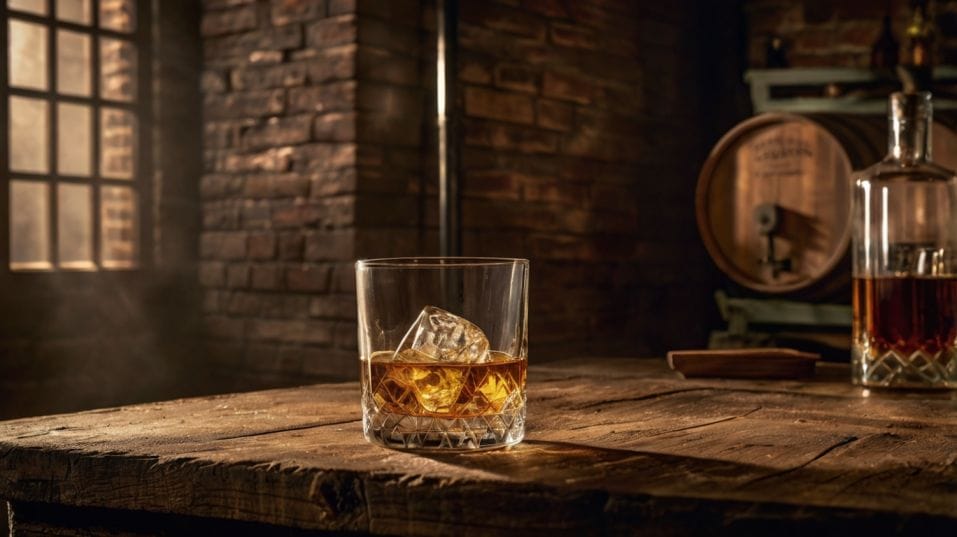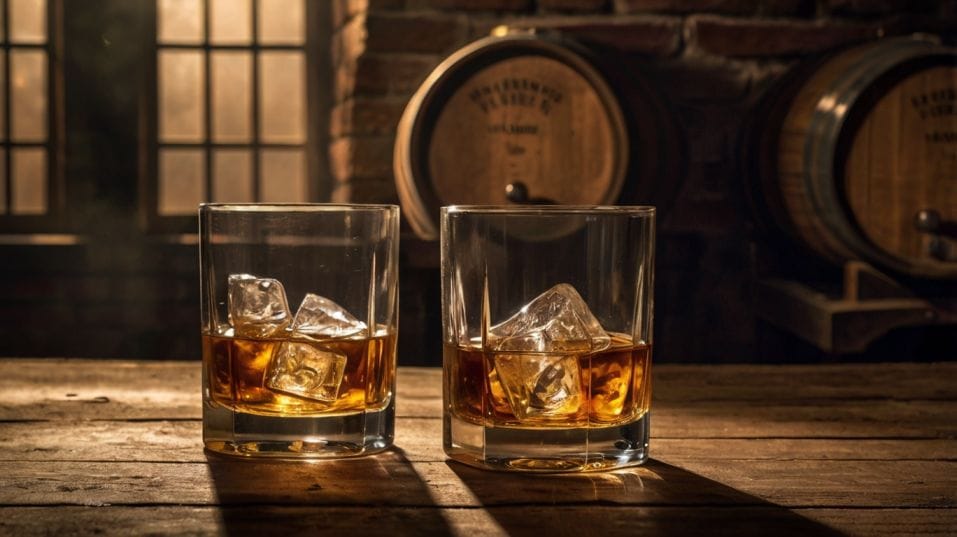Chill Filtration vs Non-Chill: Does It Affect Taste?
Discover how chill filtration impacts whiskey flavor, texture, and aging—perfect for curious drinkers building their palate or collection.

Ever wonder why some whiskeys feel richer, deeper, more alive on the palate? It might come down to one quiet decision at the distillery: chill filtration.
This process changes more than just a whiskey’s clarity—it can shape how it tastes, how it feels, and how it lingers.
If you’re early in your whiskey journey, understanding the difference between chill filtered and non-chill filtered bottles will sharpen your palate and unlock a new level of flavor.
What Is Chill Filtration?
At its core, chill filtration is about appearance. Whiskey is cooled—usually down to about 0°C (32°F)—then passed through a fine filter system that removes certain compounds: long-chain fatty acids, esters, and proteins.
These are naturally occurring in the distillation and maturation process, especially in whiskeys that are bottled at higher proofs or aged in active casks.
Why remove them? When whiskey gets cold or diluted with water, these compounds can cause a haze or faint cloudiness.
Some sediment may even form over time. This doesn’t affect flavor or safety, but to many producers, especially larger ones, clarity equals quality—at least from a marketing standpoint.
So chill filtration became a standard. It makes whiskey shelf-stable, visually pristine, and consistent across climates and markets. It’s whiskey made to behave. But here’s the thing: whiskey isn’t supposed to behave.

What Gets Lost in Chill Filtration
The compounds removed during chill filtration aren’t just cosmetic issues. They’re loaded with flavor-active molecules and texture-enhancing elements that directly influence the drinking experience.
Esters carry fruit and floral notes. Fatty acids can contribute buttery richness or a waxy grip on the palate. Proteins help knit flavors together and extend the finish.
Strip those out, and you start flattening the whiskey’s arc—its depth, its complexity, its tactile identity.
Even in blind tastings, experienced drinkers often describe chill filtered whiskeys as “clean” or “crisp”—but also thinner, shorter, less expressive.
They might still be good, especially in well-balanced blends or delicate styles, but they rarely feel alive in the same way.
And that’s the key: feel. Non-chill filtered whiskey often carries a weight and texture you don’t realize you’re missing until you taste them side by side.
Why Non-Chill Filtered Whiskey Tastes Different
It comes down to integrity. Non-chill filtered whiskeys keep those original compounds in the bottle, so what you’re tasting is closer to what came out of the cask. It’s less polished, yes—but more dimensional.
Mouthfeel and Texture
Mouthfeel is the first clue. Non-chill filtered whiskey tends to coat the tongue differently. It doesn’t just hit the palate—it lingers, grips, evolves.
It’s the difference between water and broth, between a studio mix and a raw demo. You feel it as much as you taste it.
The Role of Proof
Proof matters too. Most non-chill filtered whiskeys are bottled at 46% ABV or higher. Why? Because those flavor compounds stay suspended at higher strength.
Drop the ABV below 46%, and they start to fall out—creating that haze distillers want to avoid. So if you see a 40–43% ABV whiskey that’s non-chill filtered, it’s either a rare exception or possibly mislabeled.
What you’re really getting with non-chill filtration is more of the cask’s voice—unfiltered, undiluted, and unmasked by cosmetic tweaks.
The wood speaks louder. The spirit feels more natural. And water (when added carefully) reveals more rather than less.
How to Taste the Difference
You don’t need a lab coat or a whiskey diploma to spot the difference. Just pay attention.
Start by comparing two whiskeys with similar specs—same region, similar proof, same grain bill—but one chill filtered, one not. Pour them side by side.
Don’t rush. First, look at the liquid. The non-chill filtered one may show a slight haze, especially if it’s been in the fridge or had water added. That’s a good sign.
Now smell. Chill filtered whiskey often has sharper top notes but may feel slightly muted or hollow underneath. Non-chill filtered whiskey tends to show more range—richer base notes, fuller aromas, more transitions.
Then sip. Focus on how the whiskey behaves in your mouth. Does it coat your tongue? Does it build over time? Does the finish stretch out or just flicker and vanish?
Even subtle changes matter. Once you’ve trained your palate to look for them, you’ll start sensing what was filtered out.
What It Means for Collecting and Storing
If you’re buying whiskey to explore and build a personal collection—not just to display bottles—then filtration matters.
It tells you something about the distiller’s priorities. Chill filtered whiskeys are made to be stable. Non-chill filtered whiskeys are made to be expressive.
Over time, non-chill filtered bottles might develop sediment. They might haze in colder temperatures. That’s not a defect—it’s a feature. It means the whiskey is alive. If anything, treat those visual quirks as marks of authenticity.
In collecting, these bottles can also age differently. Since they retain more of their original compounds, oxidation may shift them in more interesting ways after opening. They breathe like wine.
That can make every revisit to the bottle a new experience—something you rarely get with highly processed spirits.
Final Thoughts
Chill filtration makes whiskey look good. But non-chill filtration helps it feel good, taste deeper, and age with more personality. Once you’ve had both, it’s hard to go back to a whiskey that’s been stripped of its texture and complexity.
So next time you’re exploring bottles, ask yourself: do you want something smooth and safe, or something raw and real? The answer depends on your taste—but you should always know what you’re choosing.
Don’t wait. Find a non-chill filtered whiskey today. Taste it neat. Add a splash of water. Pay attention to how it unfolds. Build your palate. Build your collection. And keep pushing for flavor that doesn’t play it safe.




